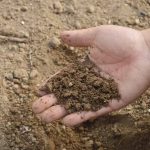Foundation can fail due to several cases.
● Overall and/or differential settlement are caused by excessive ground movement and deformation and can induce stresses between strips of foundation. These stresses can induce additional loads onto adjacent strips. Settlement can also lead to cracking and increasing groundwater table under the foundation. Settlement can also be separated into two parts, short-term and long-term. Short-term settlement accounts for foundation loads and soil mass. Long-term settlement accounts for time-dependent settlement effects and effects due to time dependent hydration of soil and loss of water pressure within the soil. To mitigate settlement effects, movement or connection joints can be provided between foundations portions, in order to reduce stress during movement or loading.
● When trees are located near the foundation, foundation failure is prone to occur due to movement of tree roots and the shrinkage and expansion of soils near tree roots due to changes in water level. Movement of roots are caused by the growth of trees. The shrinkage and expansion of soils are caused by trees absorbing water through their roots (shrinkage) and by rainwater absorbed by soil (expansion). Insulation and coatings should be used to control changes in moisture level.
● For shallow foundations, when the structural loads are high, this will induce cracking. Moreover, when there are concentrated loads, this will induce punching shear failure, as well as, cracking.
● The bearing capacity of the foundation is not sufficient to support the applied loads on the structure. This will create shear failure between strips of foundations and between the foundation and the surrounding soil.
● Soil creep can occur when there are changes in water levels or moisture content of the soil, due to adjacent vegetation absorbing the soils’ water. Insulation and coatings should be used to control changes in moisture level.
● Foundation failure can occur when the pile depth do not reach all the way below expansive soils that are affected by moisture content changes. Foundation settlement and heave can occur, since the pile cannot support the loads above.
● Flooding can occur, which affects groundwater movement. Insulation and coatings should be used to control changes in moisture level.
● Corrosion in steel can occur in steel reinforcement in reinforced concrete piles and in steel piles. This is due to oxidation and degradation when the piles are in contact with groundwater level, which consist of high levels of reactive ions.
● Soil dissolution due to contact with limestone can occur, mostly in karst terrains. Carbonic acid is formed, which creates cavities within the strata. Sometimes, the roof of the voids can collapse and form sinkholes. These holes do not provide any support to the foundation.



Comments are closed